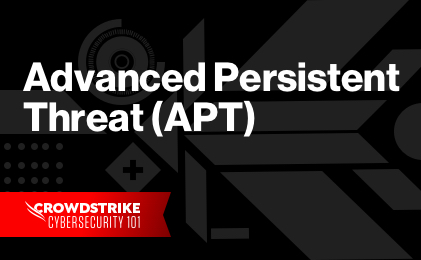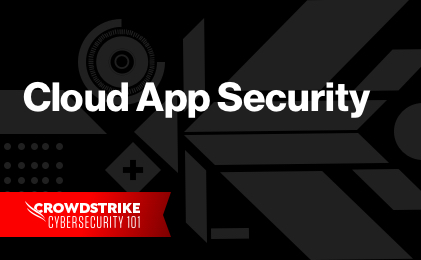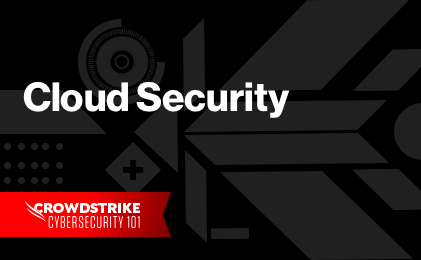What is a cloud security assessment?
A cloud security assessment is a comprehensive evaluation aimed at identifying and mitigating security risks within an organization’s cloud infrastructure. This essential process helps organizations safeguard against a wide range of security threats by:
- Identifying weaknesses and potential points of entry within the organization’s cloud infrastructure
- Analyzing the network for evidence of exploitation
- Outlining approaches to prevent future attacks
Key focus areas of a cloud security assessment:
- Overall Security Posture: This involves interviews and reviews of documentation to gauge the security measures in place for the enterprise’s cloud infrastructure.
- Access Control and Management: Examines identity and access management protocols, including user roles, account settings, and key management practices.
- Network Security: Evaluates firewall configurations and network segmentation to check for common vulnerabilities.
- Incident Management: Reviews the policies and processes in place for responding to security incidents affecting cloud resources.
- Storage Security: Assesses the security of cloud storage solutions — including object and block storage — and their respective data snapshots.
- Platform Services Security: Inspects the security settings of advanced cloud services tailored to specific providers.
- Workload Security: Analyzes security measures for virtual servers, hosted containers, functions, and serverless workloads.

The Complete Guide to CNAPPs
Download CrowdStrike’s Complete Guide to CNAPPs to understand why Cloud-Native Application Protection Platforms are a critical component of modern cloud security strategies and how to best integrate them to development lifecycles.
Download NowWhy conduct a cloud security assessment?
Cloud computing significantly enhances operational efficiency compared to traditional on-premises servers. But this convenience introduces new security challenges — the deployment of cloud-based workloads can outstrip the pace of security measures, creating critical blind spots. Organizations frequently manage multiple cloud accounts or subscriptions, each receiving varying degrees of security oversight. This disparity can lead to scenarios where less prioritized workloads suffer from inadequate security controls. Consequently, the impact of a security breach can be severe, even in cloud environments previously deemed less critical.
Moreover, the shift toward remote work has broadened organizational attack surfaces, underscoring the need for robust “anytime, anywhere” security measures beyond traditional perimeter defenses. Misconfiguration is also a prevalent issue in cloud security and a primary cause of many security breaches. These misconfigurations often arise from inadvertent errors made by network engineers, particularly in the early stages of technology adoption. Conducting a cloud security assessment is crucial for identifying these vulnerabilities as well as other outdated elements of the security model.
Another significant concern is excessive network permissions or inadequate user account management. In terms of user account management, these risks include excessive privileges, insufficient restrictions on source IP addresses or countries, reliance on static credentials for authentication, and a lack of multi-factor authentication (MFA), which enhances security by requiring multiple forms of verification to confirm a user’s identity. These shortcomings collectively lower the barriers for adversaries to mimic authorized activities and manipulate, steal, or destroy data. Inadequate or improper logging in cloud systems also poses critical risks, as they can complicate the detection, characterization, and recovery from malicious activities and escalate the associated costs. Effective logging practices are essential for timely identification and resolution of security incidents, underscoring the need for comprehensive cloud security assessments.

Customer Story: Porter Airlines
Read this customer story and learn how Porter Airlines consolidates its cloud, identity and endpoint security with CrowdStrike.
Download NowWhat are the benefits of a cloud security assessment?
A cloud security assessment provides organizations with the assurance that their networks and assets are properly configured, securely protected, and free from active threats. By reviewing the organization’s network history, a cloud security assessment will also identify points of access or other weaknesses within the organization’s architecture and offer detailed recommendations to help strengthen defenses and improve capabilities in the future.
Specific benefits of a cloud security assessment include:
- Reduced risk from accidental misconfiguration: By adopting the tailored configuration changes recommended as part of the cloud security assessment, the organization can reduce its attack surface in the cloud environment.
- Reduced risk from missed notifications: The cloud security assessment team’s recommendations can improve an organization’s ability to detect and respond to compromise so that a minor issue does not become a full-blown breach.
- Improved resilience: The team performing the cloud security assessment will provide recommendations to help organizations recover from a breach faster.
- More efficient account management: Organizations with less-than-optimal identity architectures can reduce the time they spend on account and privilege management while reducing the chances of inadvertent excessive privileges being granted.
- Detection of past compromise: Though a cloud security assessment is not a comprehensive cloud compromise assessment, it can identify variances from the norm in the organization’s cloud configuration that could have been caused through compromise.
Learn More
Explore this page and schedule a demo to learn how CrowdStrike Falcon Cloud Security creates less work for security teams, defends against cloud breaches, and optimizes multi-cloud deployments. Schedule Demo: Falcon Cloud Security
Considerations when performing a cloud security assessment
There are a few considerations to keep in mind before performing a cloud security assessment.
- Map your present state: Determine what you are already doing and the security measures you have in place. This step will help you get an idea of what needs to change.
- Map your future: Determine what you want your future cloud environment to look like based on what you already have going on.
- Time: Set aside resources for the assessment and spend time on it without sacrificing other initiatives.
- Cost: Hosting data in the cloud can have variable costs, depending on its size and complexity. Do your due diligence when considering cloud security assessment tools to ensure the cost is justified.
Cloud security assessment components
A cloud security assessment usually consists of three basic components:
- Documentation review and interviews: This enables the assessment team to grasp the business objectives of the client’s environment, comprehend the intended architecture, and anticipate planned modifications to the environment.
- Automated and manual testing: The assessment team utilizes specialized tools to gather information about the environment, identify misconfigurations and deviations from the ideal architecture, and evaluate potential attack pathways.
- Recommendations: The assessment team develops tailored recommendations for each finding and presents them to the client’s security team for review and implementation.
- Presentation: The assessment team collaborates with the client’s internal stakeholders to review findings, discuss detailed technical and overarching strategic recommendations, and address any questions.
Additional cloud security services may include:
- Incident response for cloud: Conduct forensic analysis of a breach and implement incident response for your cloud environment.
- Compromise assessment for cloud: Determine if your cloud environment has been breached (in the past or currently).
- Red team/blue team exercise for cloud: Simulate a targeted attack of your cloud environment to test your cyber defenses.
6 steps to execute a cloud security assessment
The six steps to execute a cloud security assessment are:
1. Define the scope of the assessment
The initial step involves defining the scope of the cloud security assessment to ensure comprehensive evaluation. This process includes aligning the assessment with regulatory requirements and industry standard frameworks specific to cloud environments.
2. Identify cloud assets
To perform a cloud security assessment, it is essential to identify all assets that exist within your cloud environments. These assets may include sensitive customer and company data and details about your cloud architecture, such as its configurations and access controls. It is important to analyze all cloud assets for misconfigurations or irregularities so you can promptly patch these vulnerabilities.
3. Evaluate risks and security controls
Evaluate the risk associated with each identified asset and vulnerability. Prioritize these risks based on their potential impact on the organization. Additionally, review the effectiveness of existing security controls and determine how well they protect against identified threats.
4. Test the cloud environment
To uncover any remaining threats and vulnerabilities, conduct vulnerability assessments and penetration tests. This will determine the resilience of the cloud environment against potential security breaches.
5. Plan to remediate the threats
Utilize the priority list from the risk evaluation to strategize remediation efforts. Recommendations should include enhancing or adjusting access controls, conducting additional testing, and revising the existing security strategy to effectively mitigate vulnerabilities.
6. Regularly revisit the assessment
A cloud security assessment is an ongoing process, not a one-time event. For organizations to keep pace with evolving threats and maintain a secure environment, they must perform regular cloud security assessments and update their security measures accordingly.
Expert Tip
A cloud security assessment helps organizations evaluate their cloud infrastructure to determine if the appropriate levels of security and governance are implemented to counter challenges and risks that are unique to each organization. Learn more about CrowdStrike's cloud security assessment
Why choose CrowdStrike for your next cloud security assessment?
Discover how CrowdStrike’s cloud security assessment offers unparalleled precision, tailored strategies, and proactive risk management to enhance your organization’s security posture.
- Expertise and Precision: CrowdStrike’s cloud security assessment leverages industry-leading expertise to deliver precise evaluations of your cloud infrastructure. By identifying vulnerabilities and misconfigurations that often go unnoticed, the assessment provides critical insights that strengthen your security posture and prevent potential breaches.
- Customized Security Strategies: Each assessment is tailored to the specific needs and challenges of your organization, ensuring that the security measures and recommendations are directly applicable to your environment. This customized approach maximizes the effectiveness of your security investments, making CrowdStrike an invaluable partner in cloud security.
- Proactive Risk Management: Investing in CrowdStrike’s cloud security assessment allows your organization to stay ahead of emerging threats. Proactively identifying and mitigating risks not only protects your critical data but reduces the likelihood of costly downtime and reputational damage, safeguarding your long-term business interests.


